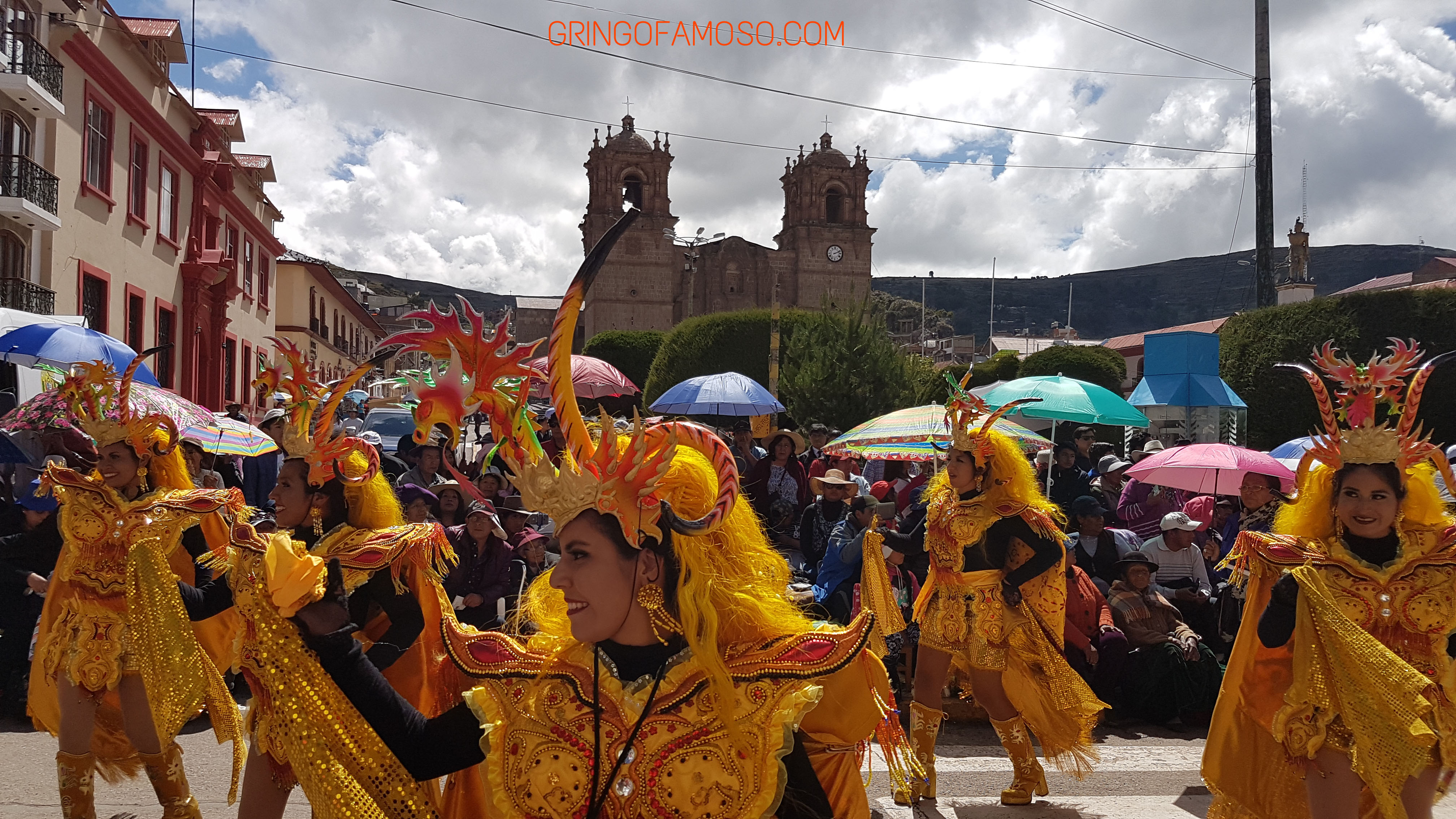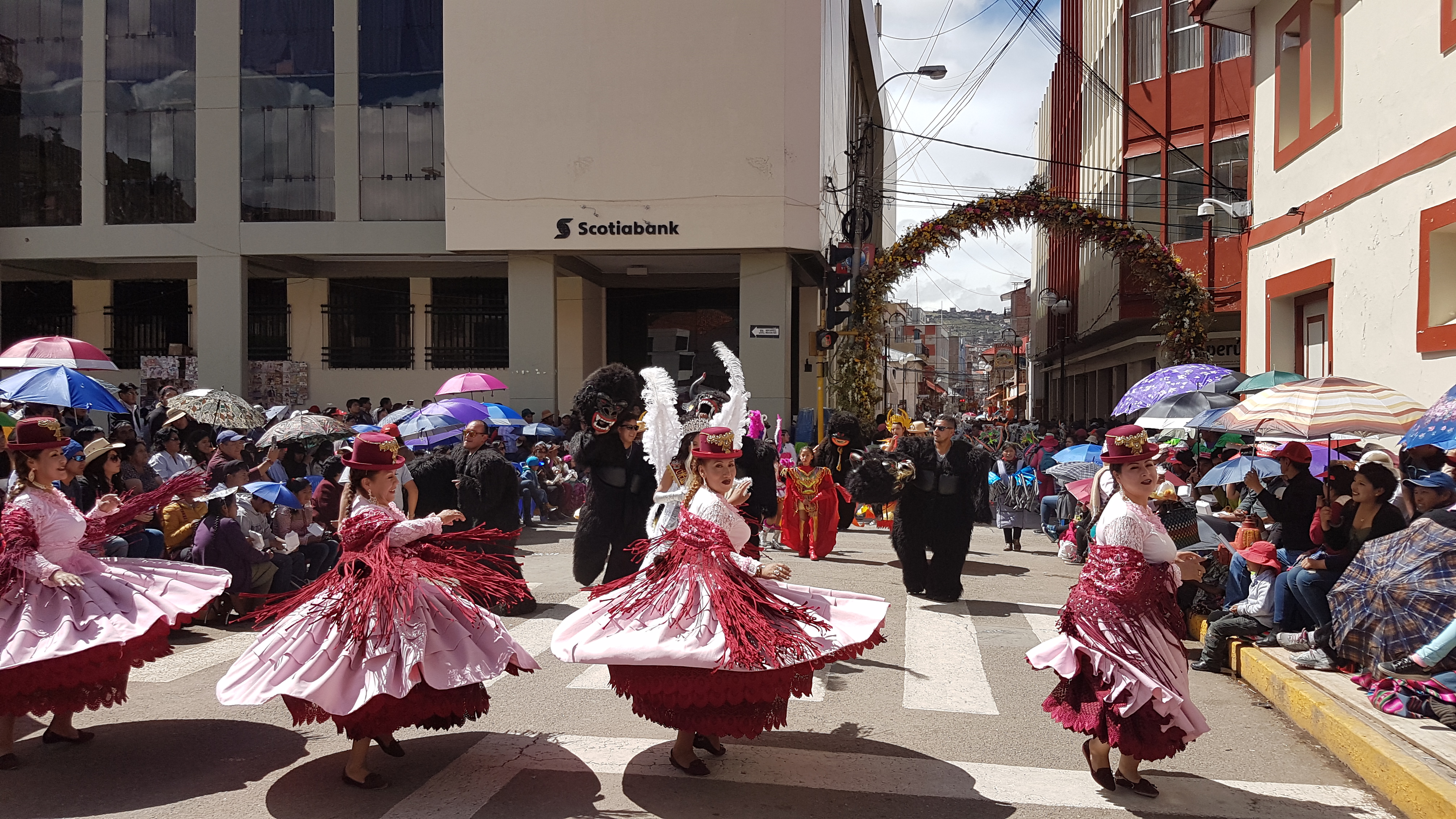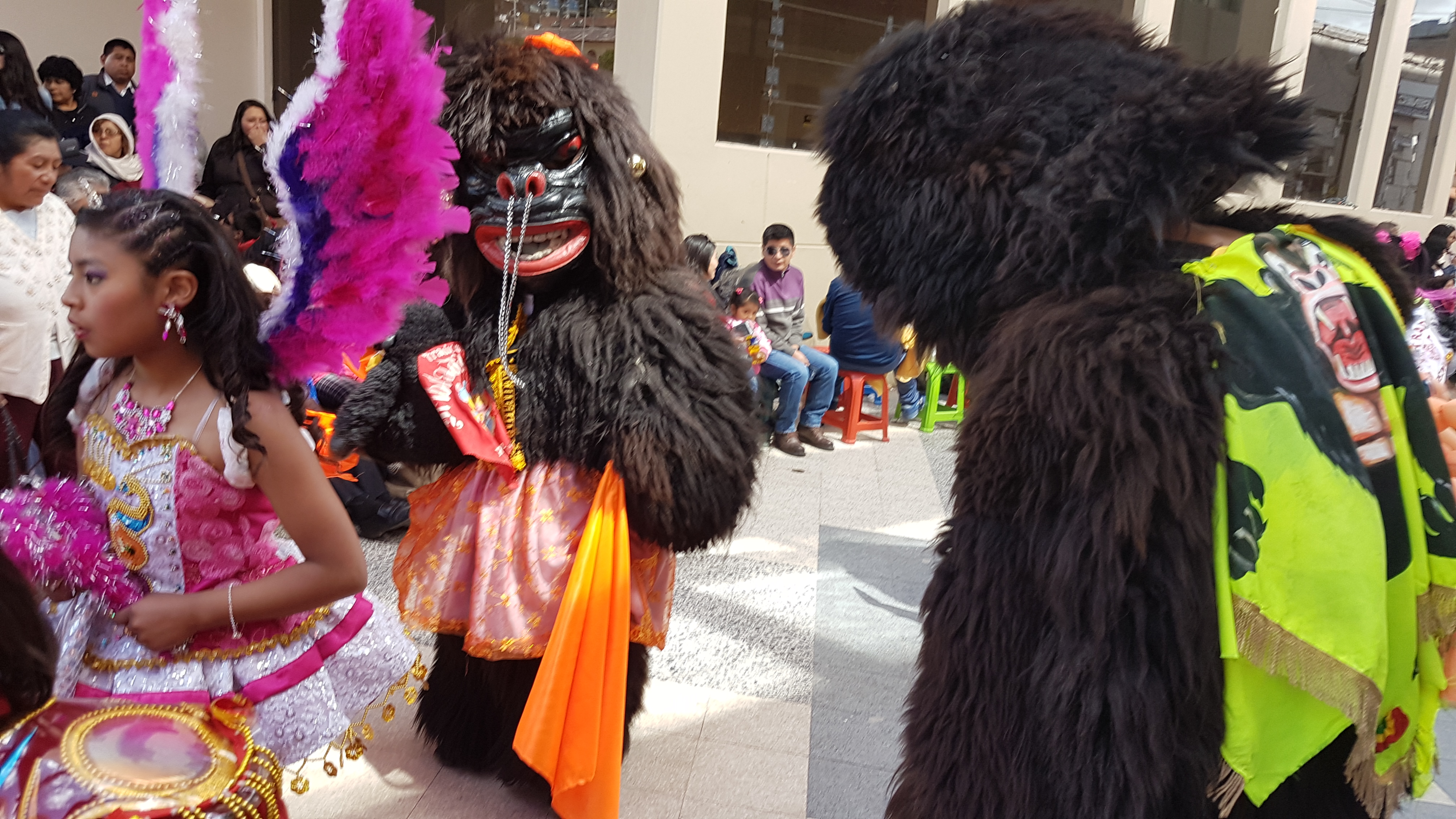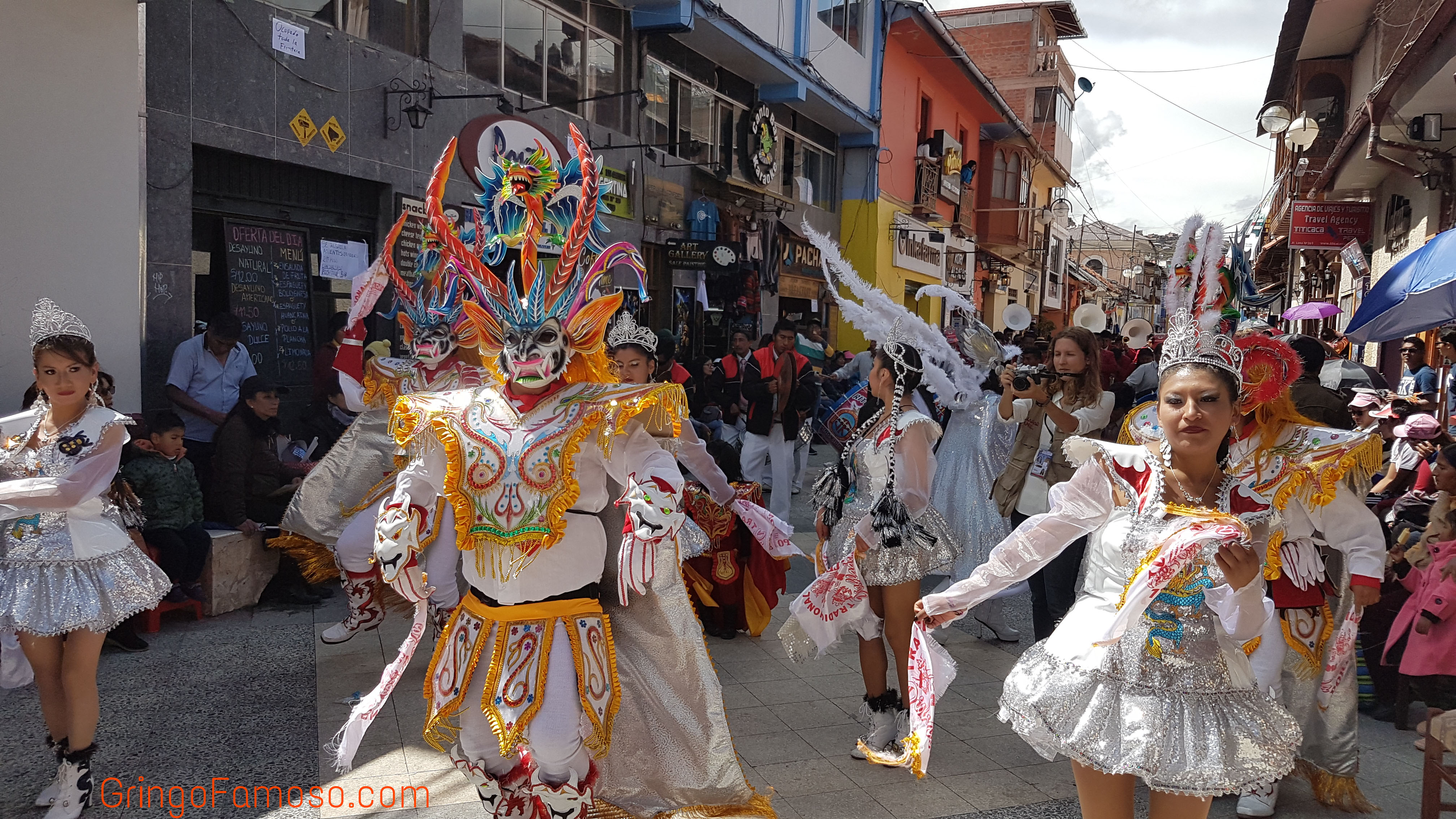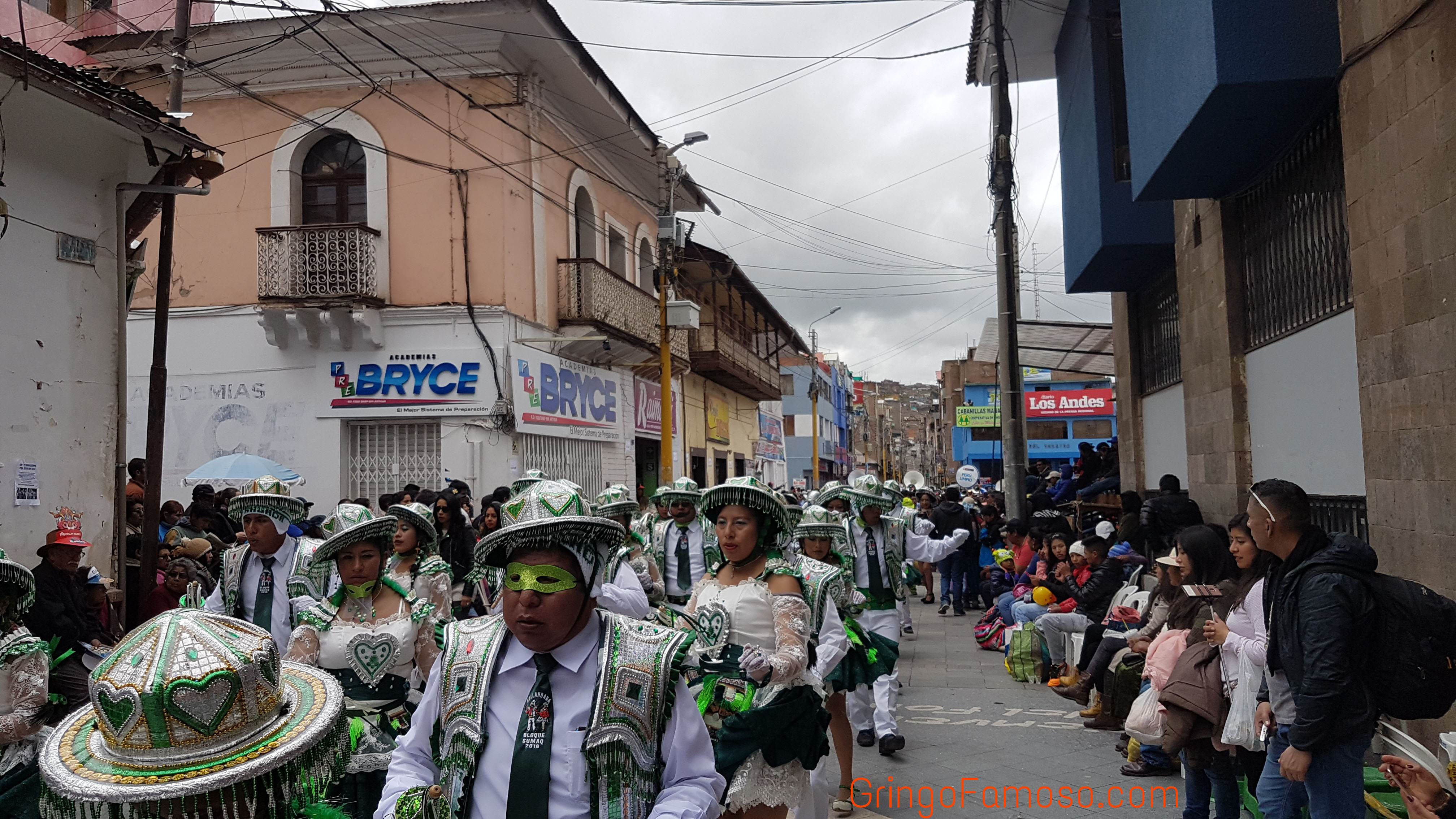Out of all the festivities that can be experienced in Peru, none are more lavish than the Candelaria in Puno. This danceoff is so breathtaking that it’s recognized as a cultural patrimony by USECO. Every year over 100,000 dancers compete in a multiple day procession that snakes through the streets of Puno. Each dancer sports elaborate costumes that range from horrifying to downright comical. From la diablada to the morenada, no traditional Andean dance is ignored. These dances steal the show in Bolivia and Peru, since they are a living reflection of countless subcultures.
La Festividad de la Virgen de la Candelaria de Puno is so epic that it’s easy to forget that it’s a celebration for the cathedral’s virgin. In 1591, fray Domingo de Santo Tomás ordered the construction of the Santuario de la Virgen de la Candelaria. Once it was built in Puno, this temple eventually hosted the Presentation of Jesus on February 2nd, 1988. It was so groundbreaking that the local Obispo Jesús Mateo Calderón Barrueto elevated the temple’s status. This announcement sparked celebrations that birthed the Festividad de la Virgen de la Candelaria.
Today what started as a simple celebration has transformed into an international display of native heritage. True to tradition, the Peruvians took the traditions that the Spaniards imposed on them and turned it into a party. The Calendaria is an international native dance competition that’s complimented by a simultaneous seven-day drinking binge. On top of the 100,000 dancers from all over Peru, Bolivia and Chile, it employs 10,000 musicians and 35,000 workers. It’s absolutely breathtaking to witness, since the normally dull town of Puno comes alive with unadulterated folklore.
On top of being swamped with indigenous dances, the city comes alive with unity and cultural pride. The passion of the dancers is amazing, since they dance for 16 hours daily for an entire week. This is done at the height of the rainy season, so they routinely get drenched. Despite being dripping wet in an extremely cold climate, the dancers defy mother nature and keep dancing. Fueled by copious amounts of alcohol that’s openly passed around, these dance teams represent their heritage with unmatched vigor.
El Gringo Famoso at Candelaria
When we got to Puno, the festivities were already in full swing. Over the pouring rain, we could hear the noise from the marching bands echoing throughout the streets. By now it was dark and freezing cold, so finding shelter was our first goal. To our horror, everyone was taking advantage of the festivities to jack up the hotel prices. Rooms that normally went for 30 to 50 soles were now 80 soles and up. These were prices that the hotel attendants told my Peruvian friends, so I could only imagine what they were charging foreigners.
After begrudgingly paying 80 soles for the room, we dropped off our luggage and hit the street. A fierce wind was ripping through the air, which made the rain even colder. Despite these horrific conditions, we pulled up the hoods on our jackets and sprinted towards the festivities. Following the sound of the music, the candelaria was impossible to miss. Before we even got to the parade we reached a wall of spectators. These were the informal viewers, since the more affluent spectators were drinking happily under tents on the side of the street.
Each seat cost 100 soles, so most of the crowd took their chances with the rain. Passing bottles of rum and trying to cover themselves with cheap umbrellas, they murmured in awe as the saw the procession. We could barely see the action, so we made our way through the crowd until we were bordering the paid seats. It was far from an ideal position, but it would have to do since we were late. Peering out over dozens of people, we were immediately overwhelmed by the situation.
Acting like the bleak weather was nothing but a mind state, the dancers pranced around the street with glee. Each one had wild costume that was so elaborate that it bordered on insanity. From bells to intricate embroidery, each costume was a work of art. Teams of apes, demons, jungle women & saylla dancers streamed through the street. They were all affiliated to dance teams that were proudly emblazoned on their costumes. The poorer teams rolled the dice while the more established teams had lines of security guards in suits.
These guards were there to protect the dancers, since it was complete madness. Everyone watching was so drunk that they happily tried to offer beverages to the dancers. While many dancers accepted these advances and chugged glasses of rum, most were already taken care of. Bottles of beer and cuba libre mixtures were being passed around to help fight off the cold. Nearly every dancer was indulging in copious amounts of booze, and I couldn’t blame them. While this would have been negligent in other situations, Puno’s climate during rainy season demanded it.
It was so fucking cold that any dancer who didn’t drink booze would have perished during the night. To their credit, they were dancing so vigorously that they didn’t get drunk. Every man, woman and child was leaping up to the beat with unrivaled enthusiasm. Each team had its own marching band, so the sounds of drums and percussion rang through the air.
Between the elaborate costumes and amazing choreography, this spectacle was impossible to take our eyes off of. For the next 5 days, we were sucked into a different world. From 6 in the morning to midnight, the dance teams paraded through the streets of Puno. Defying the rain and filled with a sense of joy that resonated from their soul, the dancers continued dancing beautifully. Each day everyone was drunker and more belligerent, so by the last day it was complete madness. One team ended up winning, they were all so impressive that it was impossible to guess which one pulled it off.
At the end of the festivities, everyone plunged into a final round of debauchery that lasted until 8am the next morning. Looking out at Puno the next day, I thought that I was waking up in a warzone. The streets were filled with mounds of confetti, broken bottles, plastic cups, pieces of costumes, bells and occasional used condoms. This beautiful display of culture transported us so far into another world that returning to modern life was heartbreaking.
